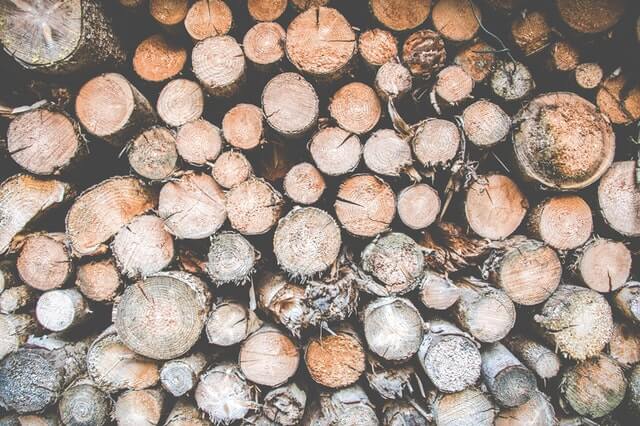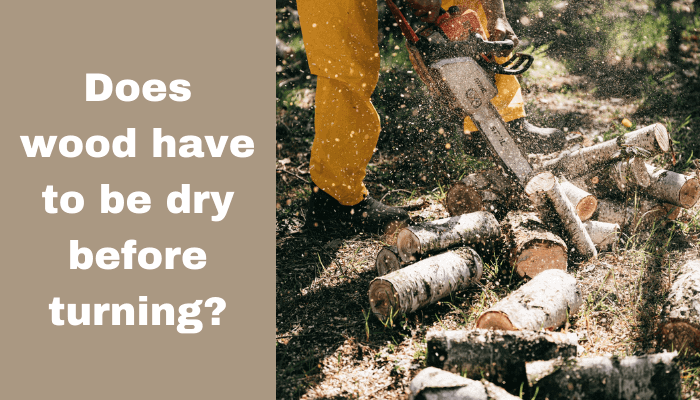Yes, wood has to be dry before you turn it. If the wood is wet, the moisture will cause splitting and cracking in your finished product. Wood needs time to dry after being cut or split from a log for at least three weeks.
Does Wood Have To Be Dry Before Turning?
For any woodturning projects, the quality of the woods plays a major role in their success. Even if you are but a beginner at this craft, it’s best for your first project to be made from dry wood so that your end product will have an aesthetically pleasing texture and calm luster.
The most important reason to dry wood before turning is that it lends itself better to work with. Wood should be dry before turning. Dry wood turns predictably and holds its shape well after being turned.
How Long Does Wood Need To Dry Before Turning?
Wood needs time to dry after being cut or split from a log for at least three weeks. If the wood is wet, the moisture will cause splitting and cracking in your finished product. Wood that has been dried out can be turned anytime without the worry of this happening. It does not matter how much water was on it when you started turning as long as it is dry, you can continue to work on your project.

Now that we have heard about the time needed for the wood to be in a dried-out state before turning, how do conditions affect drying times? Does temperature make a difference? Yes! The higher the temperature of air or soil around your piece of lumber, the faster it will dry.
The hotter the temperature, the faster it dries. As we get into the summer and winter months, this can make a huge difference in how quickly your wood may be ready to turn! Depending on where you live (particularly if there is humidity), drying times can vary dramatically from one week to six weeks for some lumber products.
Check out our article about preparing green wood for turning.
Can You Turn Wet Wood?
You can but you have to do it relatively fast. After that, you need to wait for it to dry before you can finish it. This is not advisable because the moisture can cause cracking and splitting in your end product. But don’t let that stop you from experimenting. Turning green wood is also easier on the tools. You won’t have to re-sharpen that much.
Remember to clean your lathe after turning wet wood because it can rust.
Read: Best and Worst Wood for Turning on a Lathe
How Do You Know If Wood Is Dry Enough For Woodworking?
Knowing if the wood is dry enough for woodworking is relatively easy. The best way to tell if the wood has dried enough for turning, without testing it with a moisture meter (though these are available), is by looking at how much of the bark remains on the log after harvesting or purchase.
If you can easily peel away half of the outer layer from your logs then they are ready for turning.
If you have trouble peeling off any bark whatsoever on your logs, then they need more time drying. The color matters too! If it is still mostly green with brown or yellow strips sticking out here and there then those stripes signify that water is still present in the wood.
Water is bad for turning because it can lead to splitting and cracking once the piece has been turned and dried. When you are done with your project, remember that water on a lathe will rust so be sure to clean up thoroughly when finished working.
For those who are just starting out or want an introduction into this art form before committing to purchasing higher-quality woods and more expensive tools, there are ways to get started without breaking the bank on your first turnings.
If you’re looking for some guidance about where to begin when turning wood at home but don’t know what kind of projects would work best for beginners, we have compiled a list below detailing beginner-friendly projects made from inexpensive materials!
Conclusion
The quality of the wood you use is a major factor in any successful project. While most beginners will start with dry, seasoned lumber, it’s important to be aware that good tools are also necessary for success as well.
If you have any woodturning projects in your mind, consider making them from dry wood for the best possible results. There’s nothing like starting with a quality product to guarantee success!
You can also try turning green wood to see what it is like. The final product might warp or crack but it is a nice experience to try.
